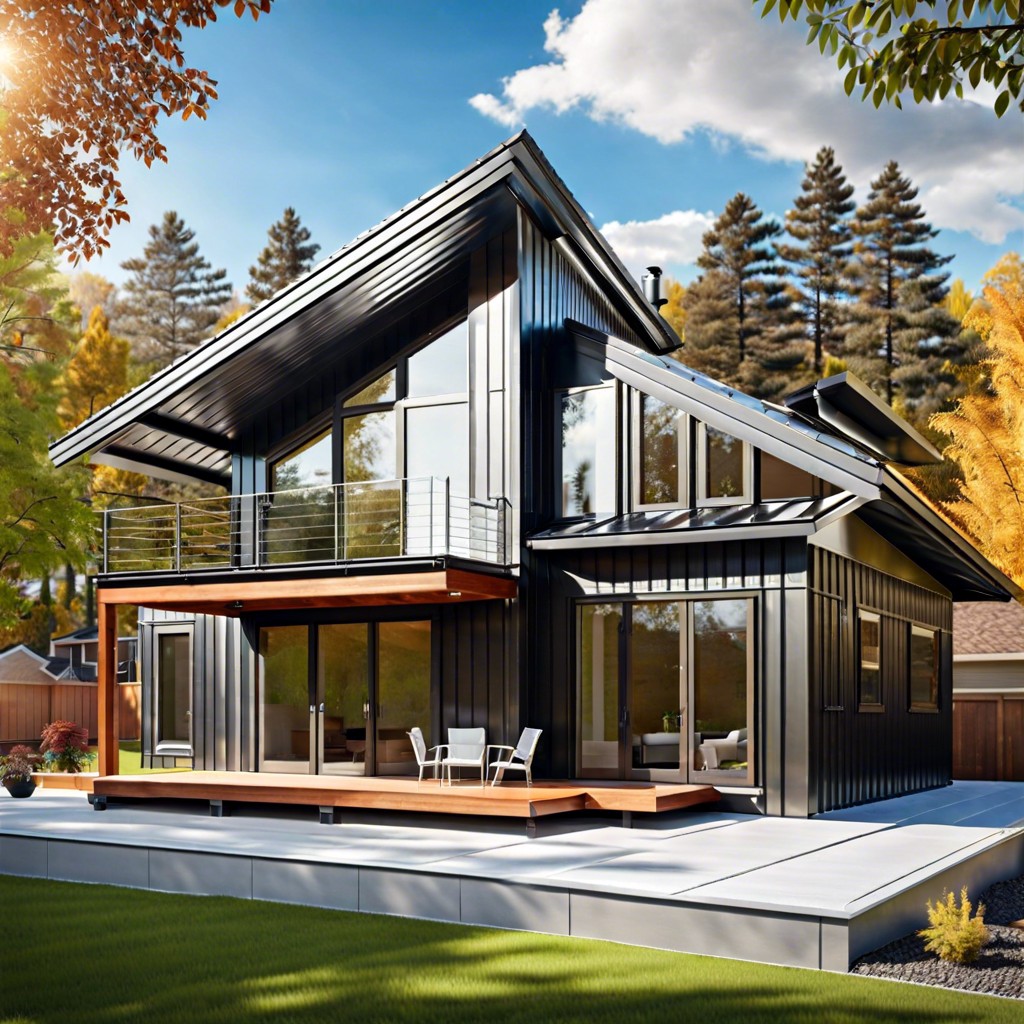Last updated on
Exploring the benefits of metal roofing, this comparative analysis delves deep into the reasons behind the increasing preference for metal over other traditional roofing materials.
Key takeaways:
- Metal roofs are durable and can withstand high winds and hail storms.
- Metal roofing is energy efficient and can reduce cooling costs.
- Metal roofs have a long lifespan of 40 to 70 years.
- Metal roofs require low maintenance and resist decay and infestation.
- Installing a metal roof can increase your home’s resale value.
Durability

Metal roofs are a pinnacle of toughness in roofing materials, boasting a remarkable resistance to a variety of environmental stressors. Engineered to withstand high winds, these roofs can often sustain wind uplifts of up to 140 miles per hour. Their solidity makes them impervious to cracking and corroding, which plagues other roofing options. Moreover, metal roofs do not succumb easily to impact from hail storms, a common cause of damage to lesser materials.
The interlocking panels provide added strength against harsh weather conditions. In regions prone to wildfires, metal’s noncombustible nature becomes an invaluable asset, helping to safeguard a home against airborne embers or other fire-related debris. With this level of durability, invested homeowners gain peace of mind, knowing their roofing choice is crafted to endure and protect against the elements.
Energy Efficiency
Metal roofing stands out for its impressive thermal emissivity and reflectivity properties, contributing to notable energy savings. It reflects solar radiant heat, which can reduce cooling costs by 10-25%. Furthermore, the material works seamlessly with various forms of insulation and radiant barriers, enhancing its energy-efficient performance year-round.
Cool-metal roofing is designed with specialized pigments that reflect infrared radiation, offering additional energy savings. Moreover, this efficiency can be maximized when combined with appropriate attic ventilation, ensuring consistent temperature regulation and further reducing the strain on HVAC systems.
Life Span
Metal roofs boast remarkable longevity, typically enduring 40 to 70 years depending on the material. This surpasses the life expectancy of traditional asphalt shingle roofs by a significant margin, often only lasting 12-20 years before requiring replacement.
The extended lifespan of metal roofing minimizes the frequency and overall expense of re-roofing projects. Furthermore, metal’s resilience to cracking, shrinking, and eroding, along with its ability to withstand severe weather conditions such as heavy snowfall, hail, and wildfires, contributes to its impressive lifespan.
With proper installation and occasional maintenance, a metal roof can be a practically lifelong investment for a homeowner.
Low Maintenance
Metal roofs stand out for their minimal upkeep requirements. Unlike other materials susceptible to rot, metal resists decay and infestation by pests. It does not crack or curl under extreme weather conditions, which allows it to maintain its aesthetic and functional integrity over time.
Yearly inspections alongside occasional clearing of debris from gutters and the roof surface typically suffice to keep a metal roof in excellent condition. Additionally, the non-porous nature of metal prevents water absorption, a common problem in materials like wood, that can lead to severe structural issues.
Thus, homeowners can enjoy a robust roofing system that rarely calls for costly repairs or replacements due to weathering or age.
Resale Value
Investing in a metal roof can increase your home’s resale value due to its long-term benefits. Potential buyers recognize the value of a durable roof that offers longevity, reducing the need for costly repairs and replacements.
Moreover, the modern appeal of a metal roof enhances curb appeal, making your home more attractive on the market. The energy efficiency of metal roofing also plays a significant role, as it can lower utility bills, a selling point for energy-conscious buyers.
By choosing metal roofing, you not only invest in your home’s protection but also in its potential for a higher return when it comes time to sell.
FAQ
What are the advantages of getting a metal roof?
Metal roofs offer significant advantages including high durability, low maintenance, resistance to harsh weather conditions such as strong winds, extreme heat, rain, snow, and rot, as well as efficient shedding of rain and snow, thereby protecting the structure from potential damage.
What is the downside to a metal roof?
One downside to a metal roof is its susceptibility to dents, especially with softer metals like aluminum and copper, as well as potential damage to paint finishes due to factors such as hailstorms and falling tree branches.
Is it worth it to put on a metal roof?
Yes, it is worth installing a metal roof due to its extended lifespan, fire resistance, energy efficiency, and superior durability against extreme weather conditions.
Do metal roofs make a house warmer?
Metal roofs, acting as efficient insulators and natural reflectors of the sun’s UV radiation, can make a house warmer during winter and cooler in summer, with their reflective properties further enhanced by the application of light-colored paints like white.
How does the longevity of a metal roof compare to traditional roofing materials?
A metal roof typically lasts longer than traditional roofing materials, often enduring up to 60 years compared to 20 years for asphalt shingles.
Can a metal roof improve energy efficiency?
Yes, a metal roof can significantly improve energy efficiency by reflecting solar heat, reducing cooling costs, and improving insulation during cold weather.
What are the different types of metal roofing options and their distinct advantages?
Metal roofing options include steel, aluminum, copper, and zinc, each providing unique advantages such as the affordability and durability of steel, the corrosion resistance and longevity of aluminum, the aesthetic appeal and lifespan of copper, and the sustainability and recyclability of zinc.




